
Photos and text copyright 2015 by Abigail R. Gehring Recipes on the following pages and accompanying photographs are copyright 2014 by Wendy Polisi: . All rights reserved. No part of this book may be reproduced in any manner without the express written consent of the publisher, except in the case of brief excerpts in critical reviews or articles. All inquiries should be addressed to Skyhorse Publishing, 307 West 36th Street, 11th Floor, New York, NY 10018. Skyhorse Publishing books may be purchased in bulk at special discounts for sales promotion, corporate gifts, fund-raising, or educational purposes.
Special editions can also be created to specifications. For details, contact the Special Sales Department, Skyhorse Publishing, 307 West 36th Street, 11th Floor, New York, NY 10018 or . Skyhorse and Skyhorse Publishing are registered trademarks of Skyhorse Publishing, Inc., a Delaware corporation. Visit our website at www.skyhorsepublishing.com. 10 9 8 7 6 5 4 3 2 1 Library of Congress Cataloging-in-Publication Data Gehring, Abigail R. Gehring. pages cm Includes index. pages cm Includes index.
ISBN 978-1-62914-494-8 (alk. paper) -- ISBN 978-1-63220-099-0 (Ebook) 1. Desserts. 2. Cooking (Quinoa) 3. I. Title. Title.
TX773.G3654 2015 641.86--dc23 2014032203 Cover photos by Abigail R. Gehring Printed in China 
 Contents
Contents  THE WHAT, WHY, AND HOW OF QUINOA
THE WHAT, WHY, AND HOW OF QUINOA  If youre buying this book, youre probably already quite familiar with quinoa. But just in case, you should know that its pronounced kee-nwah and its a gluten-free ancient grain now grown primarily for its seeds. The seeds are full of protein and fiber, and also contain iron, lysine (essential for tissue growth and repair), magnesium (helps control blood sugar and often alleviates migraines), riboflavin (essential for metabolic energy production), and manganese (an antioxidant). I recommend white quinoa for the recipes in this book, but feel free to experiment with black or red quinoa as well. There is no significant difference in flavor, texture, or nutrition between the varying colors.
If youre buying this book, youre probably already quite familiar with quinoa. But just in case, you should know that its pronounced kee-nwah and its a gluten-free ancient grain now grown primarily for its seeds. The seeds are full of protein and fiber, and also contain iron, lysine (essential for tissue growth and repair), magnesium (helps control blood sugar and often alleviates migraines), riboflavin (essential for metabolic energy production), and manganese (an antioxidant). I recommend white quinoa for the recipes in this book, but feel free to experiment with black or red quinoa as well. There is no significant difference in flavor, texture, or nutrition between the varying colors.
Quinoa should always be rinsed before use. The seeds are coated with saponins, a naturally occurring type of soap that repels birds and insects. Its great for the quinoa and for the quinoa farmers, but not so great to eat. QUINOA FLOUR Quinoa flour is simply ground up quinoa seeds, so its pretty simple to make on your own. You can grind in a grain mill or a little bit at a time in a coffee grinder. I recommend roasting the quinoa flour after grinding it as youll get a richer, slightly sweeter flavor (unroasted quinoa flour has a noticeably bitter flavor) and it will be easier to digest.
To do so, preheat oven to 215F. Spread flour about to inch thick on a rimmed cookie sheet and bake for 2 to 3 hours. Remove from oven, allow to cool, and store in an airtight container in the freezer. Many of the recipes in this book call for Quinoa Flour Mix. Used alone, quinoa flour can lead to heavy or overly crumbly results, but with a little brown rice flour and some starch, its beautiful. Since many people choose to use quinoa because of a gluten allergy or sensitivity, this flour mix is gluten-free.
If you dont have any issues with gluten, you could substitute the brown rice flour and starch for whole wheat or all-purpose flour. QUINOA FLOUR MIX Makes 6 cups. 2 cups brown rice flour 2 cups quinoa flour, roasted (see ) 2 cups potato starch, tapioca starch, or arrowroot powder Mix ingredients together and store in an airtight bag or container. For long-term storage, keep in the freezer.  COOKED QUINOA SEEDS To cook quinoa, first rinse the quinoa thoroughly. To do so, pour the quinoa into a fine mesh strainer and run water over it until there arent any bubbles left.
COOKED QUINOA SEEDS To cook quinoa, first rinse the quinoa thoroughly. To do so, pour the quinoa into a fine mesh strainer and run water over it until there arent any bubbles left.
After its thoroughly rinsed, place it in a saucepan with an equal amount of water and turn the heat on high. Once the water begins to boil, reduce to a simmer and cook for about 40 minutes. Many of the recipes in this book call for cool or chilled cooked quinoa. For these, youll want to plan ahead to give your quinoa plenty of time to cool down. Remember this ratio when deciding how much quinoa to cook: 1 cup raw quinoa + 1 cup water = 3 cups cooked quinoa.  QUINOA FLAKES Quinoa flakes resemble oats and can, in fact, be used as a replacement for oats in most recipes.
QUINOA FLAKES Quinoa flakes resemble oats and can, in fact, be used as a replacement for oats in most recipes.
You can buy them in many health food stores or online. 
 CHOOSING SWEETENERS
CHOOSING SWEETENERS  If using granulated sugar, look for pure cane sugar. If sugar isnt labeled as cane, it is probably made at least partially from beetsand in America, sugar beets are mostly genetically modified. Many of the recipes in this book call for natural, less processed sweeteners, such as the following. Honey: The best honeyboth for nutrition and flavoris in its raw form. Raw honey is a powerful antioxidant and has antiviral, antibacterial, and antifungal properties.
If using granulated sugar, look for pure cane sugar. If sugar isnt labeled as cane, it is probably made at least partially from beetsand in America, sugar beets are mostly genetically modified. Many of the recipes in this book call for natural, less processed sweeteners, such as the following. Honey: The best honeyboth for nutrition and flavoris in its raw form. Raw honey is a powerful antioxidant and has antiviral, antibacterial, and antifungal properties.
It strengthens the immune system and can fight allergies (particularly if the honey is from local bees). Maple Syrup: Maple syrup is, well, delicious. Im from Vermont, so I grew up tapping trees and boiling down the sap to make our liquid gold. Maple syrup doesnt rank quite as high as honey on the health scorecard, but it does have a lot of anti-inflammatory and antioxidant properties. Be sure to use 100% real maple syrup, not a syrup thats artificially flavored. Coconut Sugar: Evaporated sap from coconut palm trees, coconut sugar has a delicate caramel flavor, similar to brown sugar.
It contains many vitamins and minerals and less fructose than cane sugar. What about Agave? Agave, sometimes called the great Mexican aloe, produces a sweet sap, or nectar, that is traditionally extracted from the leaves, filtered, and heated to become a concentrated syrupsort of like the tropical version of maple syrup. However, most agave sweeteners you can find in stores come from the blue agave plant, and rather than the sap being extracted from the leaves, it comes from the starchy root bulb. The agave glucose is converted to syrup through an enzymatic and chemical process that is similar to how cornstarch is converted to high fructose corn syrup (HFCS) and results in a product thats very high in fructose. Fructose in highly concentrated forms wreaks havoc on your liver and can result in long-term health problems. 

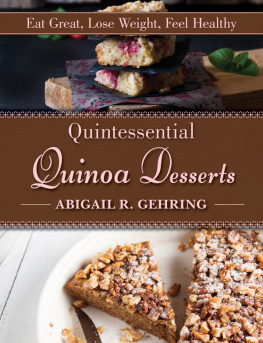

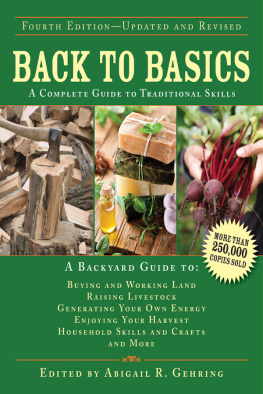
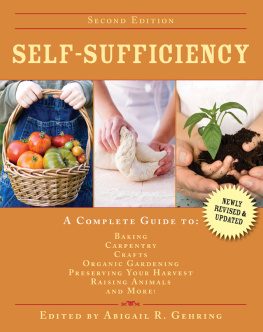

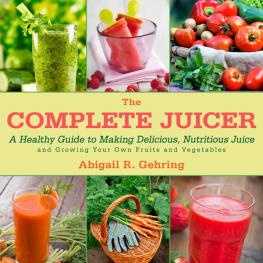


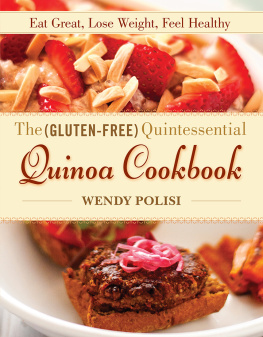


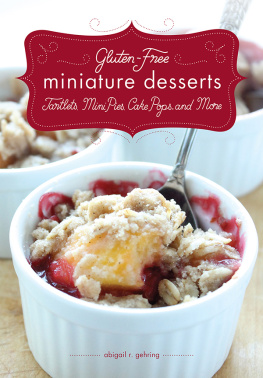



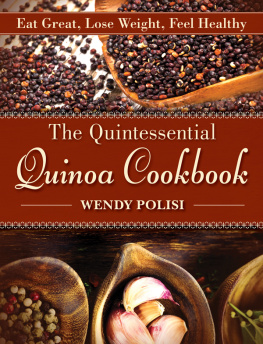






 Contents
Contents  THE WHAT, WHY, AND HOW OF QUINOA
THE WHAT, WHY, AND HOW OF QUINOA  If youre buying this book, youre probably already quite familiar with quinoa. But just in case, you should know that its pronounced kee-nwah and its a gluten-free ancient grain now grown primarily for its seeds. The seeds are full of protein and fiber, and also contain iron, lysine (essential for tissue growth and repair), magnesium (helps control blood sugar and often alleviates migraines), riboflavin (essential for metabolic energy production), and manganese (an antioxidant). I recommend white quinoa for the recipes in this book, but feel free to experiment with black or red quinoa as well. There is no significant difference in flavor, texture, or nutrition between the varying colors.
If youre buying this book, youre probably already quite familiar with quinoa. But just in case, you should know that its pronounced kee-nwah and its a gluten-free ancient grain now grown primarily for its seeds. The seeds are full of protein and fiber, and also contain iron, lysine (essential for tissue growth and repair), magnesium (helps control blood sugar and often alleviates migraines), riboflavin (essential for metabolic energy production), and manganese (an antioxidant). I recommend white quinoa for the recipes in this book, but feel free to experiment with black or red quinoa as well. There is no significant difference in flavor, texture, or nutrition between the varying colors. COOKED QUINOA SEEDS To cook quinoa, first rinse the quinoa thoroughly. To do so, pour the quinoa into a fine mesh strainer and run water over it until there arent any bubbles left.
COOKED QUINOA SEEDS To cook quinoa, first rinse the quinoa thoroughly. To do so, pour the quinoa into a fine mesh strainer and run water over it until there arent any bubbles left. QUINOA FLAKES Quinoa flakes resemble oats and can, in fact, be used as a replacement for oats in most recipes.
QUINOA FLAKES Quinoa flakes resemble oats and can, in fact, be used as a replacement for oats in most recipes.
